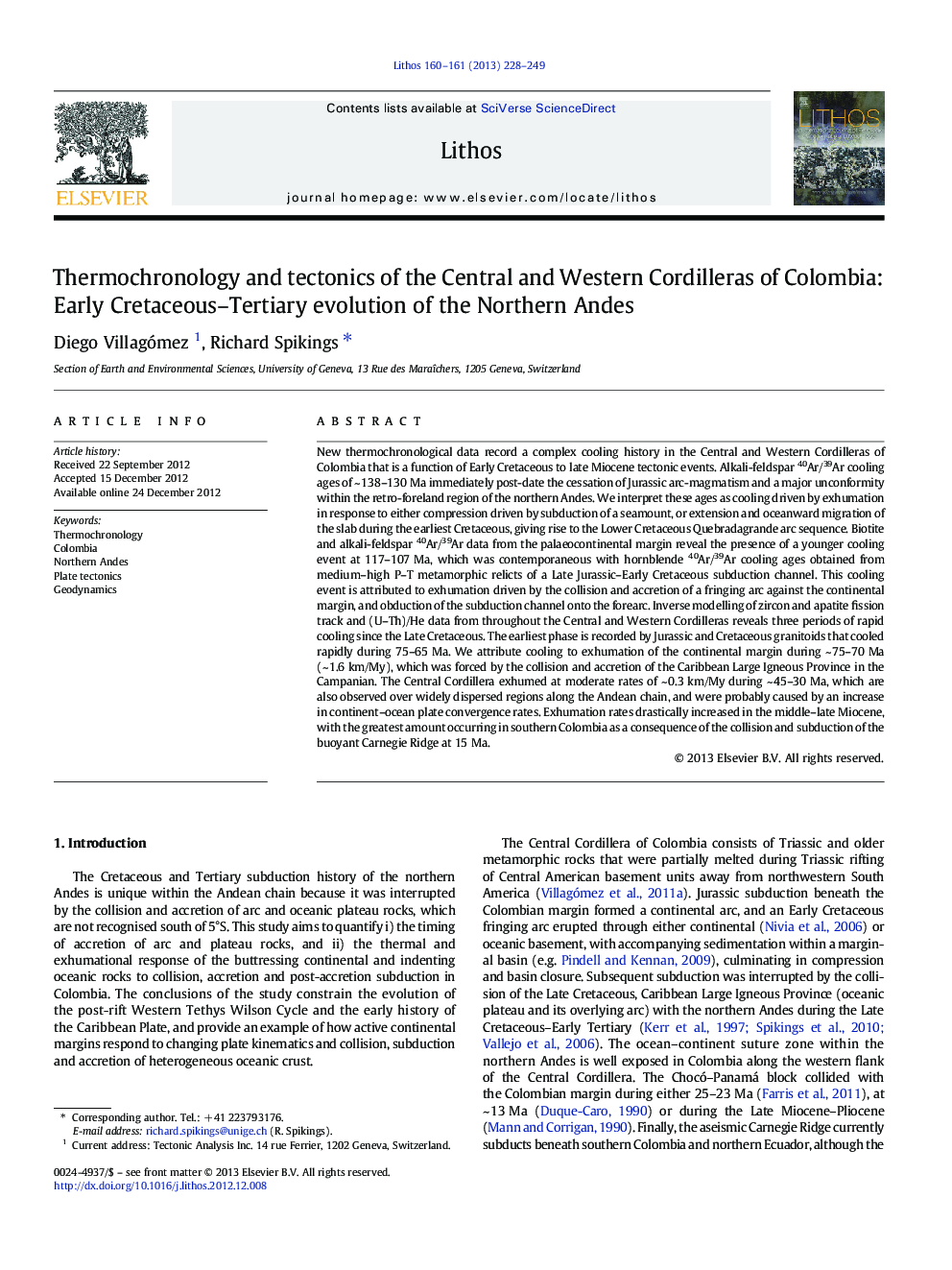| کد مقاله | کد نشریه | سال انتشار | مقاله انگلیسی | نسخه تمام متن |
|---|---|---|---|---|
| 4716335 | 1638696 | 2013 | 22 صفحه PDF | دانلود رایگان |
New thermochronological data record a complex cooling history in the Central and Western Cordilleras of Colombia that is a function of Early Cretaceous to late Miocene tectonic events. Alkali-feldspar 40Ar/39Ar cooling ages of ~ 138–130 Ma immediately post-date the cessation of Jurassic arc-magmatism and a major unconformity within the retro-foreland region of the northern Andes. We interpret these ages as cooling driven by exhumation in response to either compression driven by subduction of a seamount, or extension and oceanward migration of the slab during the earliest Cretaceous, giving rise to the Lower Cretaceous Quebradagrande arc sequence. Biotite and alkali-feldspar 40Ar/39Ar data from the palaeocontinental margin reveal the presence of a younger cooling event at 117–107 Ma, which was contemporaneous with hornblende 40Ar/39Ar cooling ages obtained from medium–high P–T metamorphic relicts of a Late Jurassic–Early Cretaceous subduction channel. This cooling event is attributed to exhumation driven by the collision and accretion of a fringing arc against the continental margin, and obduction of the subduction channel onto the forearc. Inverse modelling of zircon and apatite fission track and (U–Th)/He data from throughout the Central and Western Cordilleras reveals three periods of rapid cooling since the Late Cretaceous. The earliest phase is recorded by Jurassic and Cretaceous granitoids that cooled rapidly during 75–65 Ma. We attribute cooling to exhumation of the continental margin during ~ 75–70 Ma (~ 1.6 km/My), which was forced by the collision and accretion of the Caribbean Large Igneous Province in the Campanian. The Central Cordillera exhumed at moderate rates of ~ 0.3 km/My during ~ 45–30 Ma, which are also observed over widely dispersed regions along the Andean chain, and were probably caused by an increase in continent–ocean plate convergence rates. Exhumation rates drastically increased in the middle–late Miocene, with the greatest amount occurring in southern Colombia as a consequence of the collision and subduction of the buoyant Carnegie Ridge at 15 Ma.
► We present new thermochronological data from the Colombian Cordilleras.
► Rapid exhumation during 138–130 Ma was a consequence of margin extension.
► Back-arc basins closed at 117–107 Ma, causing the margin to deform and uplift.
► The Caribbean Large Igneous Province collided with NW South America at 75–65 Ma.
► Rapid exhumation at 15 Ma was driven by the collision of the aseismic Carnegie Ridge.
Journal: Lithos - Volumes 160–161, February 2013, Pages 228–249
